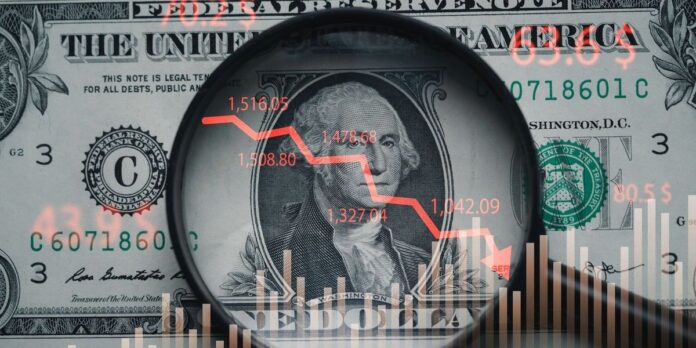Introduction to Stagflation
Stagflation is an economic scenario where inflation remains high even as economic growth slows and unemployment rises. This rare occurrence contradicts the traditional economic belief that inflation typically rises during economic booms and falls during recessions. The term was coined by British politician Iain Macleod in 1965 and became infamous during the 1970s oil crisis, when a dramatic spike in oil prices triggered both rising costs and shrinking output across much of the global economy.
Understanding Stagflation
In simple terms, stagflation means you’re paying more for everything while earning less, and finding a new job or keeping your current one becomes more difficult. The misery index, created to measure such bleak periods, adds the unemployment rate to the inflation rate. During the worst of the 1970s, it exceeded 20. As of March 25, 2025, it stood at around 6.6, with inflation at 2.4 percent and unemployment at 4.2 percent. Many economists fear that number could rise quickly if current trends continue.
Causes of Stagflation
A combination of geopolitical shocks, fragile supply chains, and new economic policies, particularly a sweeping series of tariffs enacted by the Trump administration, has created a perfect stagflation storm, economists say. The tariffs include a 10 percent universal tax on all imports, up to 25 percent duties on goods from Canada and Mexico, and a staggering 245 percent tariff on imports from China. These are not minor adjustments — they are foundational changes to the pricing structure of the US consumer and business marketplace. The tariffs act as a supply shock, making it more expensive to bring goods into the country, with businesses then passing on those costs to consumers through price hikes.
Impact on Everyday Life
For most people, stagflation translates into economic whiplash. Prices go up, wages don’t keep pace, and job security becomes tenuous. According to Forbes, a rising misery index would create a whole new roster of challenges for the everyday person. People will likely have to spend more to get the same quantity of food, clothes, and gas. Employees’ chances of getting laid off or working fewer hours will increase. For recent college graduates, the job market could become especially brutal. For families, the cost of borrowing — whether to buy a home, finance a car, or use a credit card — could rise steeply if the Fed chooses to raise interest rates to combat inflation.
Is Stagflation a Certainty?
Not all economists agree that stagflation is inevitable, or that it will reach the same severity as in the 1970s. Still, concerns are growing. Michael Feroli, JPMorgan Chase & Co.’s chief US economist, issued a warning earlier this month, stating the bank now expects a recession in 2025. He predicts unemployment will rise to 5.3 percent, while a core measure of inflation will reach 4.4 percent, which he described as a “stagflationary forecast.” KPMG also projects a shallow recession, with inflation peaking at the end of the third quarter.
Impact on Investors
Stagflation presents a complex and often discouraging landscape for investors. Unlike recessions, where bonds tend to do well as interest rates fall, stagflation often erodes the value of both stocks and bonds. In such periods, equities can suffer from declining corporate profits due to rising input costs, as well as weakening consumer demand, creating varied headwinds for the stock market. Gold, on the other hand, surged in value as investors sought assets that could maintain their purchasing power amid inflation and economic uncertainty.
Conclusion
Stagflation is not just an economic term from the past — it may soon be a lived reality for millions and even billions. With tariffs reshaping trade dynamics in real time, inflation hovering stubbornly above the Fed’s target, and job growth showing signs of slowing, the conditions are set for a troubling period ahead. Whether or not future policymaking can steer the economy away from this outcome remains to be seen. For now, consumers, businesses, and investors alike would do well to prepare for the reality that stagflation brings — not just a historical anomaly, but a modern economic threat.

